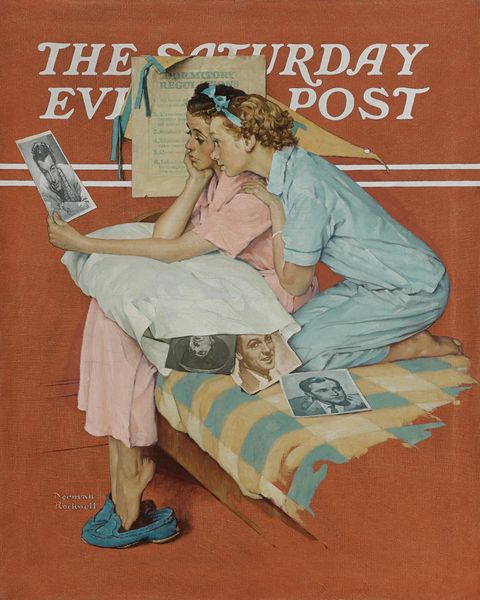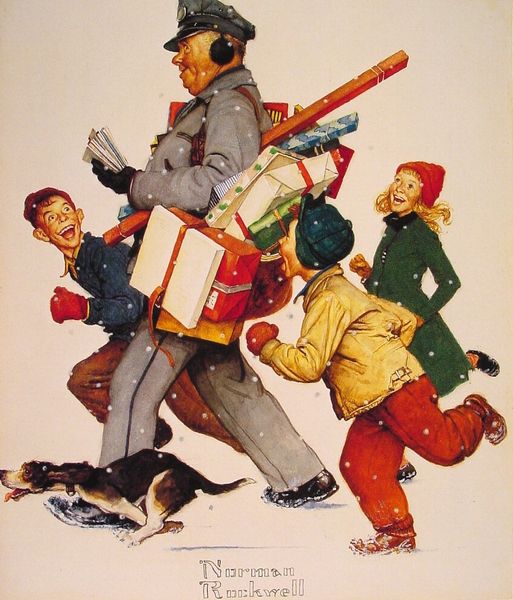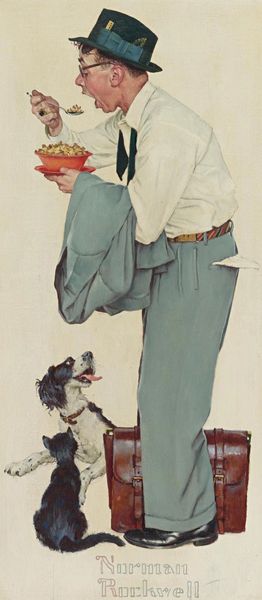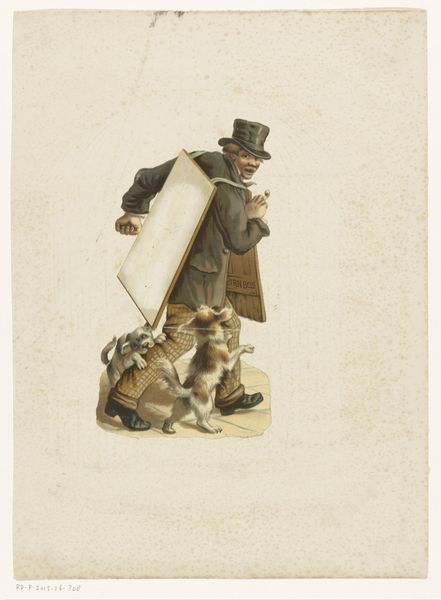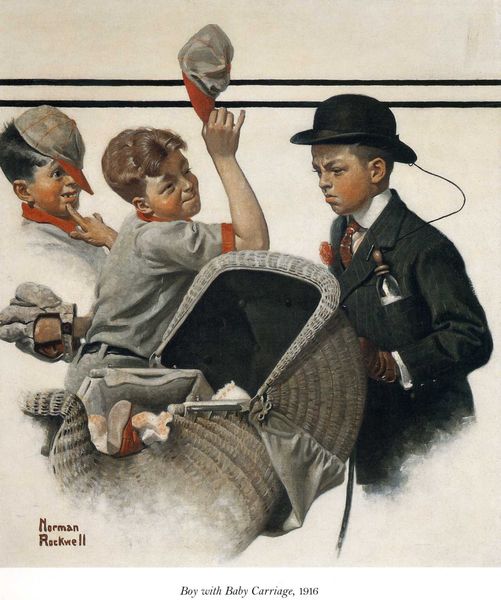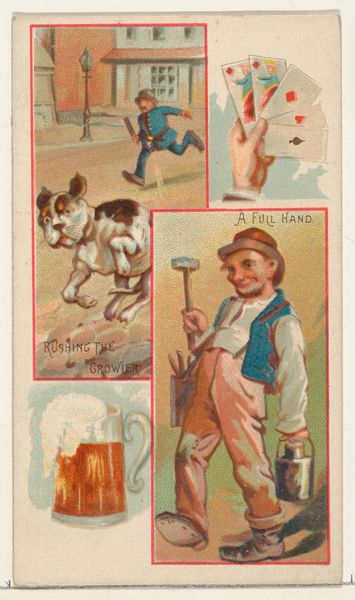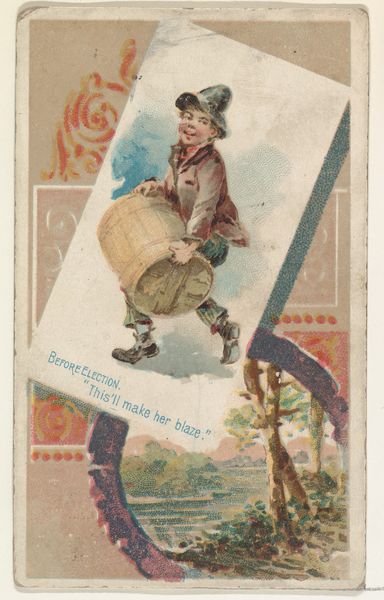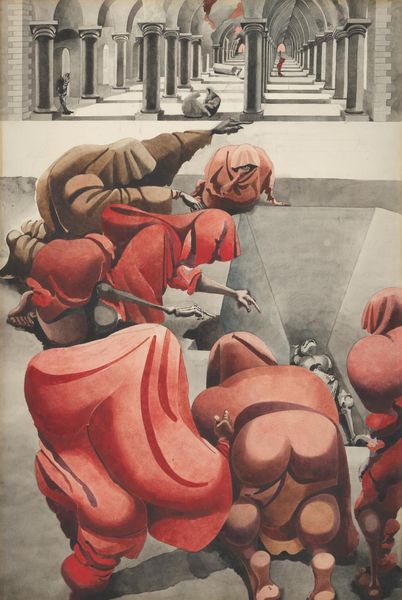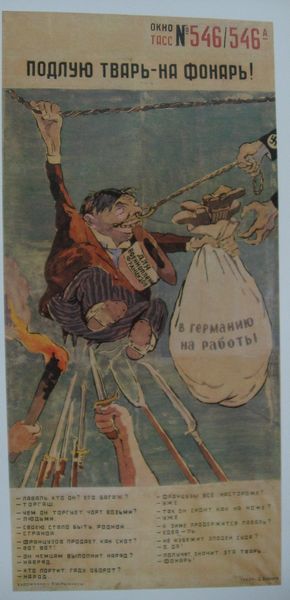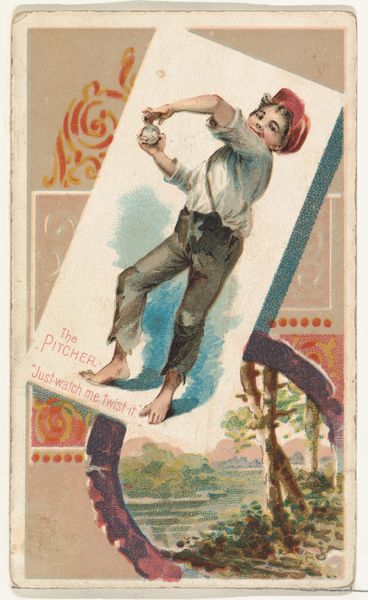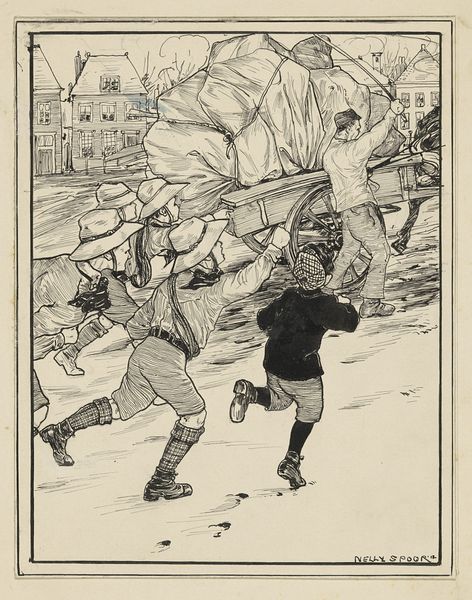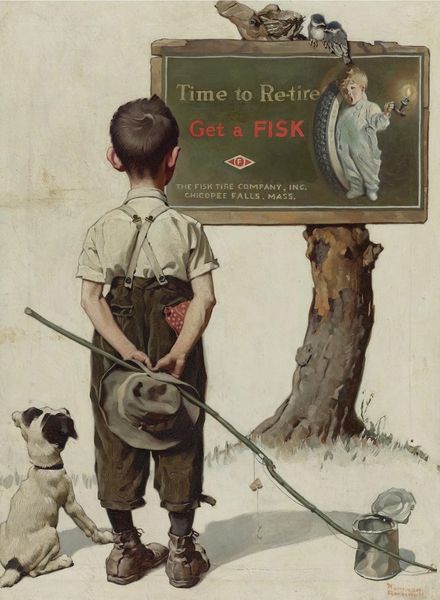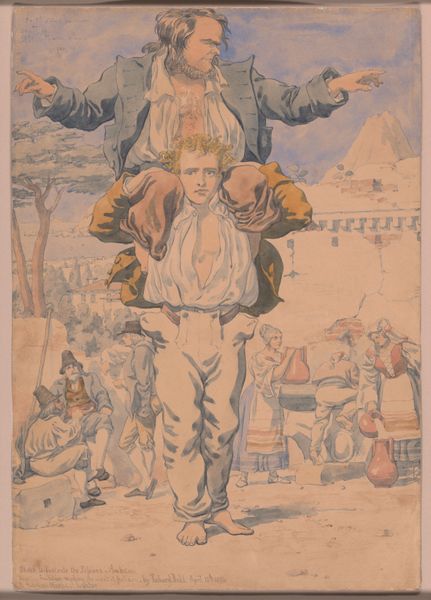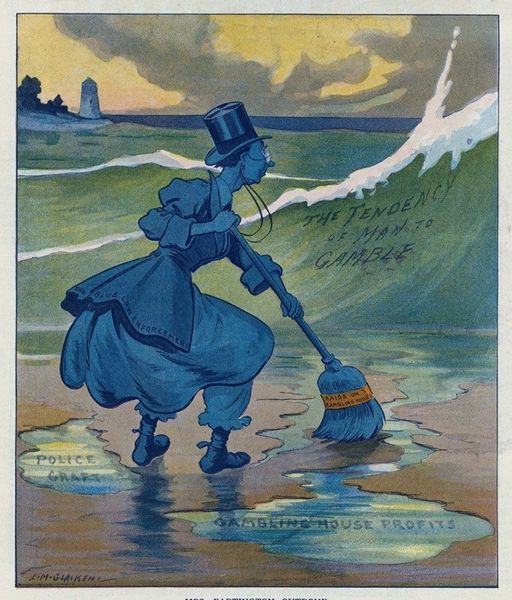
painting, oil-paint
#
portrait
#
narrative-art
#
animal
#
painting
#
oil-paint
#
dog
#
figuration
#
male portrait
#
animal portrait
#
men
#
genre-painting
#
modernism
#
realism
Copyright: Norman Rockwell,Fair Use
Curator: Norman Rockwell's "Road Line Painter's Problem," painted in 1957, depicts a comical scene of a road worker's mishap, captured in oil on canvas. Editor: Visually, it’s all organized chaos. The central figure, clearly flustered, seems to be losing control as everything spirals outward and downward, amplified by a limited but impactful color palette. Curator: Absolutely, the context here is everything. Rockwell, often lauded for his idealized portrayals of American life, presents a subtly subversive take on labor. The seemingly simple task of painting road lines is undermined by mischievous dogs and a broader sense of disarray, questioning the assumed dignity and ease of manual work. There’s also the very blatant caption, a detail easy to gloss over. Editor: Subversion is there structurally, too, especially in the careful arrangement of shapes and lines. The way the paint drips echo the curve of the dogs, creating a kind of mirroring effect, enhances the visual rhythm but does very little for legibility within the image itself. It adds tension. Curator: Considering that the image was initially a cover illustration for "The Saturday Evening Post," we need to account for a wide readership conditioned to digest idealized Americana, but look closely and it gets so real it is gritty: a narrative that challenges prevailing notions of class and work ethic of the era, opening up questions about labor, ownership, and control in post-Depression America. It portrays life and labour struggles in ways that resonated with people. Editor: For me, Rockwell has also expertly captured that split second— the precarious point of near failure, when every element feels strategically suspended for maximum effect and, well, dramatic emphasis. And without even speaking with one another, or to us, we immediately comprehend their role in this carefully choreographed spectacle. It is compellingly economical, despite the painterly realism. Curator: Indeed, a close look through the prism of contemporary social narratives brings into focus Rockwell's commentary on labor conditions and the worker’s relationship with both his tools and environment. The animals function almost as a metaphor for chaos in everyday American life. Editor: It is through Rockwell’s considered design of form and through color that the image truly communicates on all fronts. The message really lands with that kind of compositional confidence. Curator: I find myself thinking about the way Rockwell invites us to look at unseen issues, and by so doing gives value to perspectives often forgotten. Editor: And I’m still captivated by the beautiful efficiency with which such narrative weight is brought to bear.
Comments
No comments
Be the first to comment and join the conversation on the ultimate creative platform.
